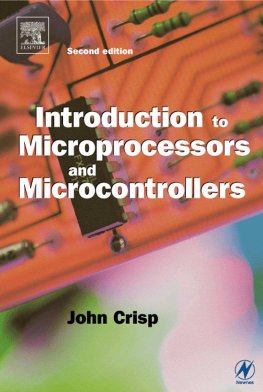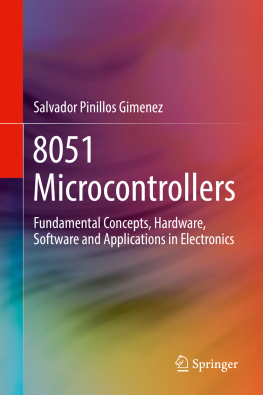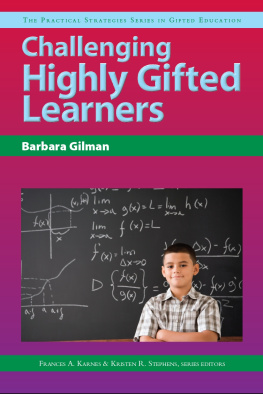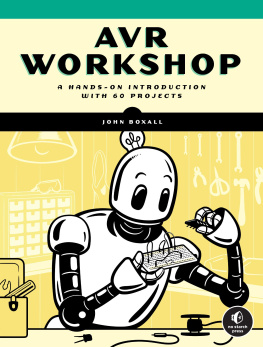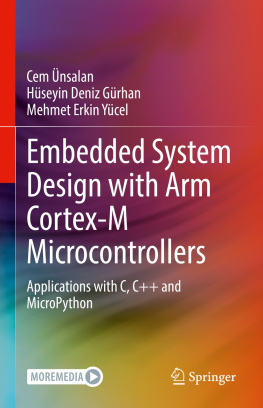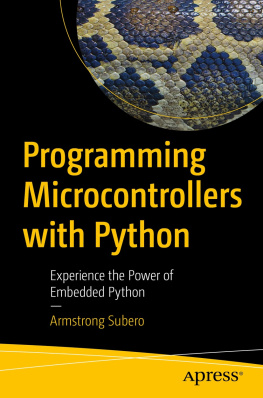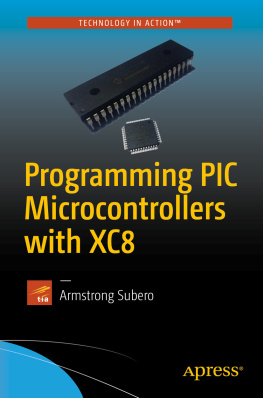Gloobal Techno - Microprocessors and MicroControllers: For Learners
Here you can read online Gloobal Techno - Microprocessors and MicroControllers: For Learners full text of the book (entire story) in english for free. Download pdf and epub, get meaning, cover and reviews about this ebook. year: 2018, genre: Home and family. Description of the work, (preface) as well as reviews are available. Best literature library LitArk.com created for fans of good reading and offers a wide selection of genres:
Romance novel
Science fiction
Adventure
Detective
Science
History
Home and family
Prose
Art
Politics
Computer
Non-fiction
Religion
Business
Children
Humor
Choose a favorite category and find really read worthwhile books. Enjoy immersion in the world of imagination, feel the emotions of the characters or learn something new for yourself, make an fascinating discovery.

- Book:Microprocessors and MicroControllers: For Learners
- Author:
- Genre:
- Year:2018
- Rating:5 / 5
- Favourites:Add to favourites
- Your mark:
- 100
- 1
- 2
- 3
- 4
- 5
Microprocessors and MicroControllers: For Learners: summary, description and annotation
We offer to read an annotation, description, summary or preface (depends on what the author of the book "Microprocessors and MicroControllers: For Learners" wrote himself). If you haven't found the necessary information about the book — write in the comments, we will try to find it.
Microprocessors and MicroControllers: For Learners — read online for free the complete book (whole text) full work
Below is the text of the book, divided by pages. System saving the place of the last page read, allows you to conveniently read the book "Microprocessors and MicroControllers: For Learners" online for free, without having to search again every time where you left off. Put a bookmark, and you can go to the page where you finished reading at any time.
Font size:
Interval:
Bookmark:
MICROPROCESSORS AND MICROCONTROLLERS
For Learners

Gloobal Techno
About Us
I am founded Gloobal Learning Solutions, This is an education technology management and NGO. It is founded in the year 2017 by a team of experienced professionals, who are passionate about education and technology.
We at Gloobal learning solution, aim to address the problem of underemployment and unemployment of fresh graduates by using latest technologies, effective pedagogies and innovative solutions for education, employability and employment.
Last Update : July, 2018
Feed back : gloobal@engineer.com
About Book
This course introduces the assembly language programming of 8086 and 8088 microcontroller. The course objective is to introduce the basic concepts of microprocessor and to develop in students the assembly language programming skills and real time applications of Microprocessor as well as microcontroller.
A microprocessor is a computer processor which incorporates the functions of a computer's central processing unit on a single integrated circuit, or at most a few integrated circuits.
A microcontroller is a small computer on a single integrated circuit. In modern terminology, it is similar to, but less sophisticated than, a system on a chip or SoC; an SoC may include a microcontroller as one of its components.
This book specially designed for learners.
Copyright disclaimer:
The e-book name of Microprocessors and Micro-controllers Referred from Standard books, Some standard definition and Pictures are directly provide for students/readers understanding purpose under by Copyright allowance.
CONTENTS
CHAPTER 1
8086/8088 MICROPROCESSORS
The registers of 8086 are 16-bit registers.
The general purpose registers, may be either 8-bit registers or 16-bit registers can be used for holding the data, variables and intermediate results temporarily or for other purpose like counter or for storing offset address for some particular addressing modes.
The special purpose registers are used as segment registers, pointers, index registers or as offset storage registers for particular addressing modes.
AX Register:
Accumulator register consists of two 8-bit registers, they are, AL and AH, which can be combined together and used as a 16- bit register AX.
AL in this case contains the low-order byte of the word and AH contains the high-order byte. Accumulator can be used for I/O operations, rotate and string manipulation.
BX Register:
BX register is mainly used as a base register. It has the starting base location of a memory region within a data segment. It is used as offset storage for forming physical address in case of certain addressing mode.
Segment registers:
1Mbyte memory is splitted into 16 logical segments. The complete 1Mbyte memory segmentation is as shown in Figure. Every segment has 64Kbyte of memory. There are 4 segment registers.
Code segment (CS):
CS is a 16-bit register containing address of 64 KB segment with processor instructions.
The processor uses CS segment to access instructions referenced by instruction pointer (IP) register. CS register cannot be changed directly.
The CS register is automatically updated during far jump, far call and far return instructions. It is utilized for addressing a memory location in the code segment of the memory, where the executable program is stored.
CX Register:
It is used as default counter which count register in case of string and loop instructions.
DX Register:
Data register can be used as a port number in I/O operations and implicit operand or destination in case of small number instructions. In integer 32-bit multiply and divide instruction, the DX register contains high-order word of the initial or resulting number.
Stack segment (SS):
It is a 16-bit register containing address of 64KB segment with program stack.
By default, the processor assumes that all data referenced by the stack pointer (SP) and base pointer (BP) registers is located in the stack segment.
SS register can be changed directly using POP instruction. It is used for addressing stack segment of memory. The stack segment is that segment of memory, which is used to store stack data.
Extra segment (ES):
It is a 16-bit register having address of 64KB segment, generally with program data.
By default, the processor assumes that the DI register references the ES segment in string manipulation instructions.
ES register can be changed directly using POP and LES instructions. It also refers to segment which essentially is another data segment of the memory. It also contains data.
Data segment (DS):
DS is a 16-bit register having the address of 64KB segment with program data.
By default, the processor assumes that all the data referenced by general registers (AX, BX, CX, DX) and index register (SI, DI) is located in the data segment.
DS register can be changed directly using the POP and LDS instructions. It identifies to the data segment memory where the data is resided.

Register segments
Pointers and index registers:
The pointers IP, BP, SP usually contains offset within the code, data and stack segments respectively.
Stack Pointer (SP) is a 16-bit register pointing used to program the stack in stack segment.
Base Pointer (BP) is a 16-bit register locating to the data in stack segment.
BP register is generally used for based indexed or register indirect addressing.
Source Index (SI) is a 16-bit register and is used for indexed, based indexed and register indirect addressing, as well as a source data addresses in string manipulation instructions.
Destination Index (DI) is a 16-bit register, which is used for indexed, based indexed and register indirect addressing, as well as a destination data address in sting manipulation instructions.
Flag Register:
Flag Register find out the current state of the processor.

Flag Register
They are modified automatically by CPU after mathematical operations, this permits the user to determine the type of the result and to determine conditions to transfer control to other parts of the program.
The 8086 flag register as shown in the figure .
8086 has 9 active flags and they are divided into two categorizes:
1. Conditional Flags
2. Control Flags
Conditional Flags:
Carry Flag (CY):
This flag denotes an overflow condition for unsigned integer arithmetic. It is also used in multiple-precision arithmetic.
Auxiliary Flag (AC):
If an operation performed in the ALU generates a carry/barrow from lower nibble (i.e. D0 D3) to upper nibble (i.e. D4 D7), the AC flag is set i.e. Carry given by D3 bit to D4 is AC flag.
This is not a general-purpose flag, and is used internally by the processor to perform Binary to BCD conversion.
Zero Flag (ZF):
It is set, if the result of arithmetic or logical operation is zero else it is reset.
Parity Flag (PF):
This flag is used to indicate the parity of result. If lower order 8-bits of the result has even number of 1s, the Parity Flag is set and if odd number of 1s, the Parity flag is reset.
Sign Flag (SF):
Font size:
Interval:
Bookmark:
Similar books «Microprocessors and MicroControllers: For Learners»
Look at similar books to Microprocessors and MicroControllers: For Learners. We have selected literature similar in name and meaning in the hope of providing readers with more options to find new, interesting, not yet read works.
Discussion, reviews of the book Microprocessors and MicroControllers: For Learners and just readers' own opinions. Leave your comments, write what you think about the work, its meaning or the main characters. Specify what exactly you liked and what you didn't like, and why you think so.

